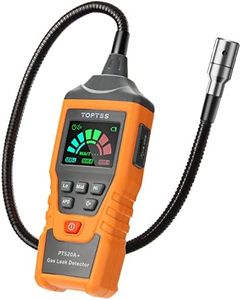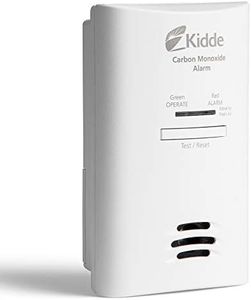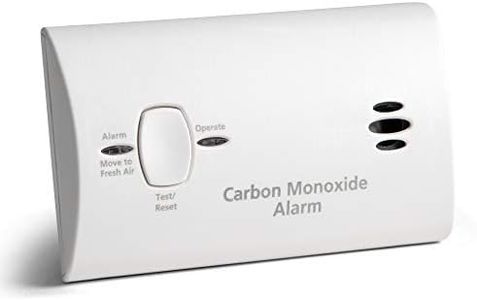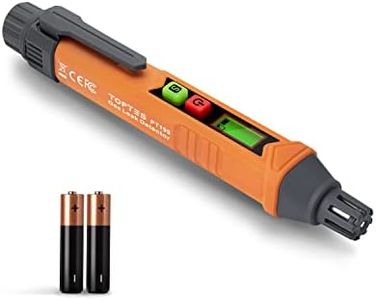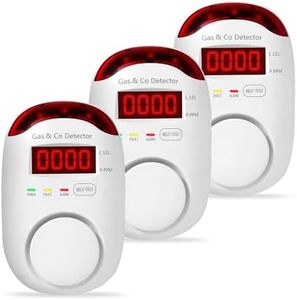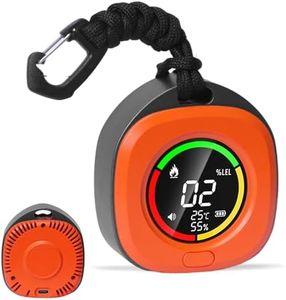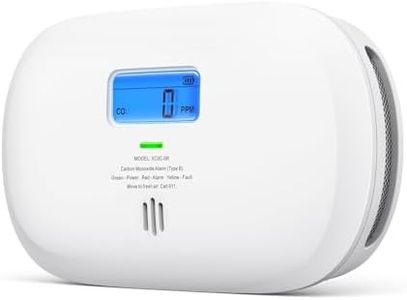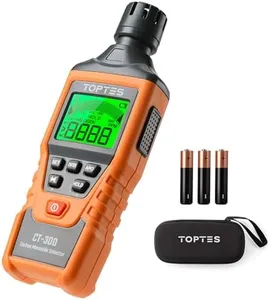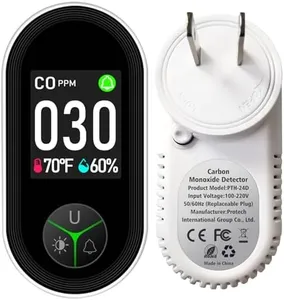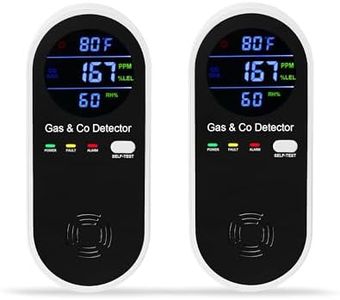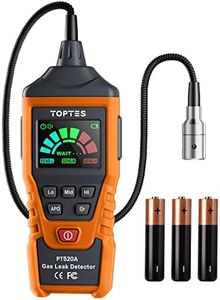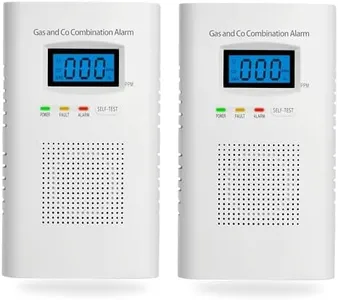10 Best Gas Detectors 2025 in the United States
Our technology thoroughly searches through the online shopping world, reviewing hundreds of sites. We then process and analyze this information, updating in real-time to bring you the latest top-rated products. This way, you always get the best and most current options available.

Our Top Picks
Winner
Kidde Carbon Monoxide Detector, Plug In Wall with AA Battery Backup, Test-Hush Button
Most important from
34282 reviews
The Kidde Carbon Monoxide Detector is a reliable device designed to keep your home safe from carbon monoxide leaks. One of its main strengths is the ease of installation; you can simply plug it into any standard 120V outlet. Additionally, it has a battery backup with 2-AA batteries included, ensuring continuous protection even during power outages. The detector uses an electrochemical sensor, which is known for its accuracy in detecting carbon monoxide levels, and emits an 85-decibel alarm to alert you if dangerous levels are detected. This audible alarm is loud enough to be heard throughout your home, which is crucial for safety.
Another useful feature is the Peak Level Memory, which records the highest level of carbon monoxide detected, giving you a clear indication of any past dangers. The Test-Hush Button allows for easy testing of the detector and silencing of false alarms, adding convenience. Moreover, the end-of-life chirp feature notifies you when the detector needs replacement, ensuring you are always protected.
On the downside, the device is limited to detecting only carbon monoxide and does not cover other gases. The operating temperature range goes up to 37.8 degrees Celsius, and it can function in a wide humidity range, making it suitable for various environments. However, it’s important to note that the detector needs to be replaced after a certain period, even though it has a 10-year limited warranty. For those looking for a straightforward, effective carbon monoxide detector with easy installation, the Kidde model is a solid choice.
Most important from
34282 reviews
Kidde Carbon Monoxide Detector, Battery Powered CO Alarm with LEDs, Test-Reset Button, Low Battery Indicator, Portable
Most important from
34120 reviews
The Kidde Carbon Monoxide Detector is a battery-powered device designed for easy installation and portability. It utilizes electrochemical sensor technology to detect CO gas effectively. The detector operates on 2-AA batteries, making it functional even during power outages.
The green LED indicates the device is powered, while an 85-decibel alarm and red LED alert users to the presence of carbon monoxide. Additionally, the Event Memory feature records the last time CO was detected or the unit was tested, which adds a layer of reassurance for users.
The Test-Hush button allows for easy testing and silencing of low battery warnings, and the device is UL listed with a 10-year limited warranty. This detector is suitable for various environments due to its operating temperature range of 40°F to 100°F and humidity tolerance from 5% to 95%. At just 8 ounces, it is lightweight and compact, measuring 1.5
Most important from
34120 reviews
TopTes PT199 Natural Gas Leak Detector with Audible & Visual Alarm, Portable Gas Sniffer to Locate Combustible Sources Like Methane, Propane for Home(Includes Battery x2)-Orange
Most important from
7344 reviews
The TopTes PT199 Natural Gas Leak Detector is a versatile tool designed to detect various combustible gases such as methane, propane, and butane. It offers a detection range of 50-1,000 ppm and can detect gases within 1-5 cm, making it effective for pinpointing leaks. One of its notable features is the rapid response time, with visual and audio alarms activating within 0.5 seconds of gas detection. The alarm intensity increases with higher gas concentrations, and the LCD screen turns red to clearly indicate danger, enhancing safety measures for your home and family.
This gas detector is compact, lightweight (2.08 ounces), and easy to carry with a pocket-sized design and non-slip grip, making it ideal for use by RV owners, DIY enthusiasts, and homeowners. The inclusion of 2 AAA batteries and a storage bag adds to its convenience. Users will appreciate the simplicity of use, including a 30-second warm-up period and an auto-power-off feature after 5 minutes of inactivity to preserve battery life.
Potential drawbacks include a limited detection range (50-1,000 ppm) which might not be sufficient for all scenarios. Additionally, its battery-powered operation means regular battery replacements are necessary. The device is best suited for indoor environments due to its upper temperature rating of 122 degrees Fahrenheit and operating humidity of up to 95%. Its loud and clear alarms, combined with a visual indicator, make it a reliable safety tool for detecting gas leaks in domestic settings.
Most important from
7344 reviews
Buying Guide for the Best Gas Detectors
Choosing the right gas detector is crucial for ensuring safety in environments where harmful gases may be present. Gas detectors are used to identify the presence of gases in an area, often as part of a safety system. When selecting a gas detector, it's important to consider the specific needs of your environment and the types of gases you need to detect. Here are some key specifications to consider when choosing a gas detector, along with explanations to help you understand their importance and how to choose the right one for your needs.FAQ
Most Popular Categories Right Now
